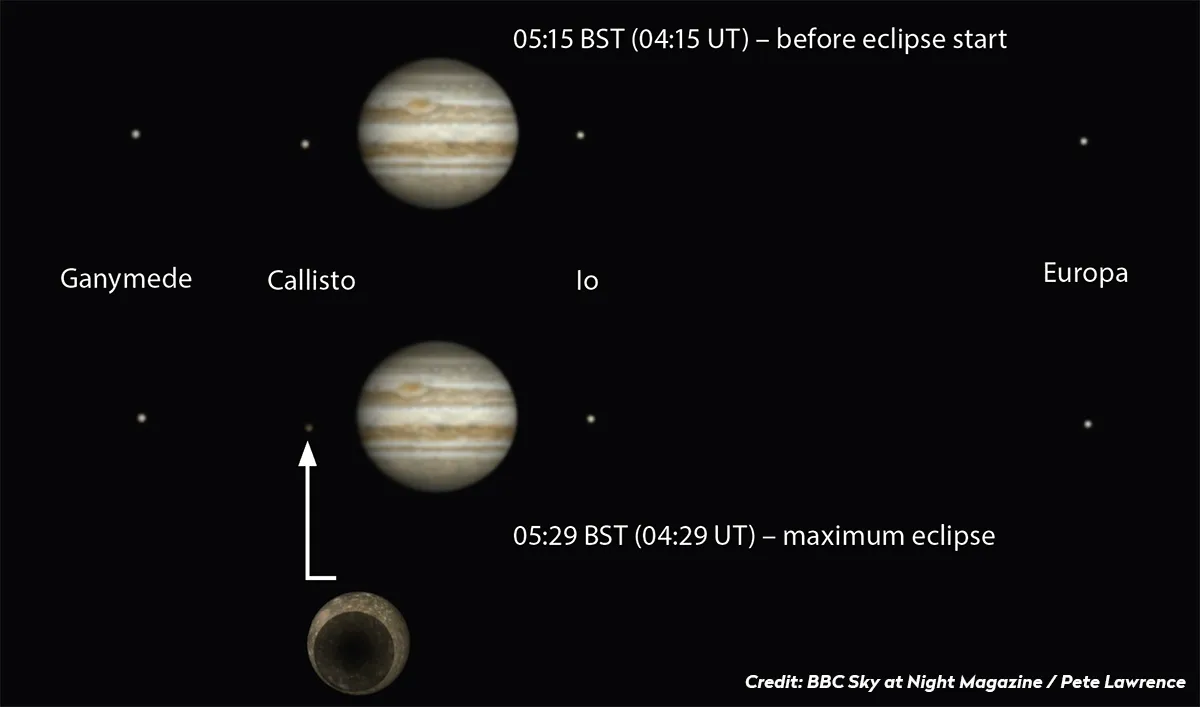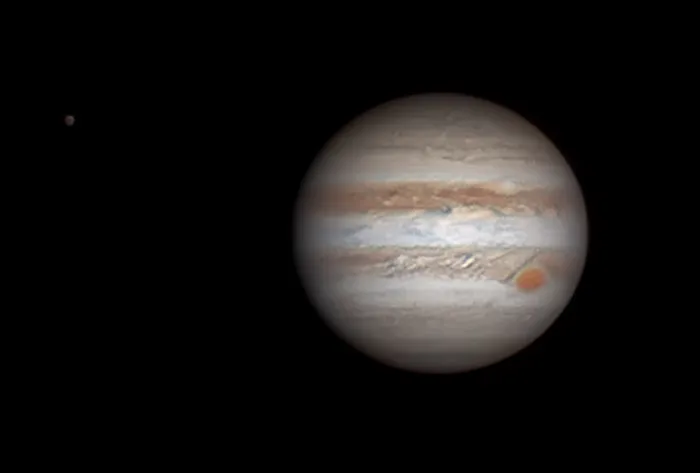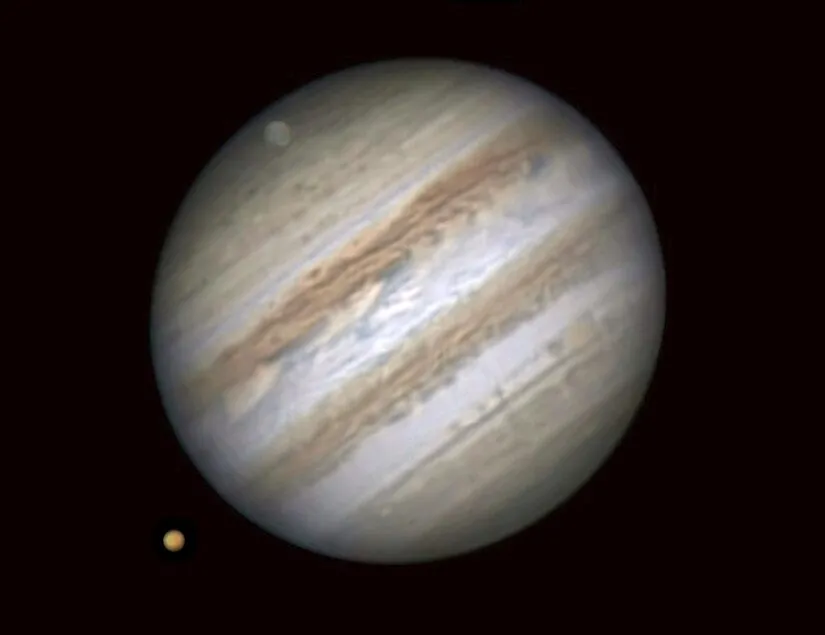On 12 April 2021, you'll be able to see the shadows of Jupiter's moons Io and Callisto crossing the face of the gas giant planet in the early morning. You'll ideally need at least a small or medium telescope to spot the Jovian moon shadows.
Before we get into how to see these Galilean moons' shadows crossing the face of Jupiter, let's take a look at why the event is occurring.
For more on the gas giant planet, read our guide on how to draw Jupiter or our facts about Jupiter.
Find out which are the best telescopes for observing planets.

Jupiter experiences an equinox at the start of May 2021. If you were on the planet, the Sun would appear on Jupiter’s equivalent to the celestial equator, the projection of its equatorial plane into the gas giant’s sky.
When this occurs on Earth, it marks the transition from winter to spring, or summer to autumn, and the same is true on Jupiter.

However, while Earth’s axial tilt of 23.4˚ creates marked seasonal effects on our planet, this is less so for Jupiter, which has a tilt of just 3.1˚.
One major visual effect that does occur involves the planet’s four largest Galilean moons. Their orbits are only slightly tilted to Jupiter’s equatorial plane, and around the time of a Jovian equinox, the Sun and Earth effectively see their orbits edge on.

This means that the Galilean moons can appear to interact with one another, passing in front of, or casting their shadows on each other’s discs.
These occurrences are collectively known as ‘mutual events’. We’re quite early in the UK’s Jupiter season, so any mutual events currently need to be very well timed to be observable.
See Io and Callisto's shadow on Jupiter

On 12 April, Io’s shadow crosses the face of Callisto between 05:22 BST and 05:36 BST (04:22 UT to 04:36 UT).
Jupiter’s altitude will be just 3.5˚ above the east-southeast horizon at this time, so pretty low.
If you can get a view of the planet, what you’ll see will be Callisto’s disc appearing to dim as Io’s shadow passes across it. The eclipse should be observable through small instruments.
As we head further into 2021 there will be further events to see. However, Jupiter’s low altitude does somewhat limit the window of opportunity for many of them.
Keep an eye on our astronomy advice page, watch our Online Planetarium or listen to our Star Diary podcast for more info on these events over the coming months.
Pete Lawrence is an experienced astronomer and a co-host of The Sky at Night.
